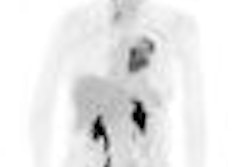Molecular imaging and therapy developer Aposense said that recent research found that its PET imaging agent appeared to help oncologists detect apoptosis (programmed cell death) early in radiation treatment for brain metastases.
In the study, which was presented at last week's annual SNM meeting in Toronto, physicians administered the Petach-Tikva, Israel-based firm's ML-10 PET tracer to 10 patients with brain metastases. A PET scan was performed to determine baseline levels of apoptosis. On day nine or 10, the ML-10 tracer was again administered, followed by another PET scan to identify changes in apoptosis as a result of treatment, Aposense said.
Seven patients completed the studies, and eight tumors were available for evaluation. All tumors demonstrated clear images of baseline pretreatment apoptosis, with ML-10 uptake increasing over time within the tumors, Aposense said. This confirmed selective retention of ML-10 in apoptopic regions of the nontreated tumors, according to the company.
Following treatment, the signal-to-background ratio in irradiated tumors increased nearly twofold over time and showed a marked enhancement in the accumulation rate of ML-10, Aposense said.
Related Reading
Aposense teams with GlaxoSmithKline, June 8, 2009
Aposense begins trial, December 15, 2008
NeuroSurvival Technologies gets financing, changes name, August 20, 2008
IBA, NeuroSurvival Technologies partner, August 14, 2008
NST is cleared for Aposense trials, July 25, 2008
Copyright © 2009 AuntMinnie.com



















